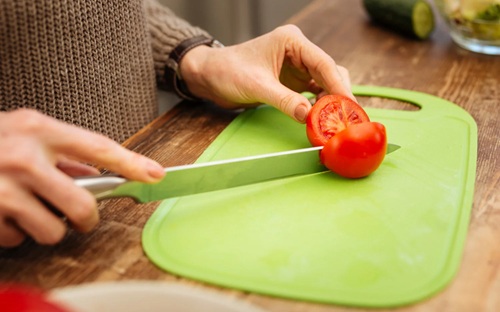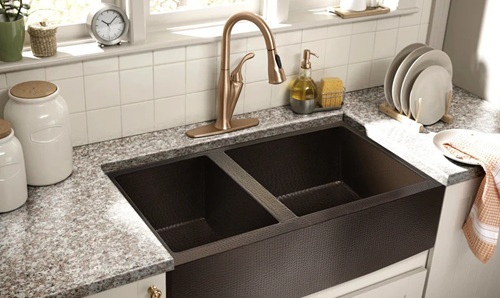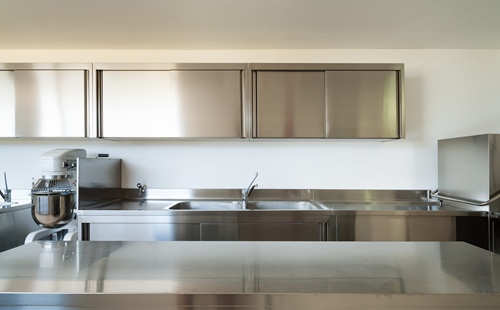In the ever-evolving world of kitchen gadgets and tools, silicone cutting boards are making their way into modern kitchens as a flexible, colorful, and seemingly practical alternative to traditional wood, plastic, or glass boards. Marketed as lightweight, antimicrobial, and dishwasher-safe, these boards appeal to home cooks looking for low-maintenance solutions. But are they truly a good investment?
Lets explore the pros and cons of silicone cutting boards, helping you to decide whether this trendy material belongs in your kitchen.
![]()
What Is a Silicone Cutting Board?
A silicone cutting board is made from food-grade silicone, a rubber-like synthetic material composed of silicon, oxygen, carbon, and hydrogen. These boards are often flexible, lightweight, and heat-resistant.
They differ from plastic cutting boards in flexibility and chemical makeup, and they stand apart from wood or bamboo boards, which are rigid, heavier, and porous. Silicone boards come in solid slab forms or flexible mats that can be rolled or bent for easy storage and use.
✅ Pros of Silicone Cutting Boards
1. Non-Slip Surface
Silicone naturally offers a high-friction surface, which means your cutting board will stay in place while you slice, dice, or chop. Unlike plastic or glass boards that may slide around on your countertop, silicone provides reliable grip and stability, improving safety during food prep.
Pro Tip: Great for wet or glossy countertop surfaces like granite or marble.
2. Flexible and Easy to Store
Many silicone boards or mats are designed to be bendable. You can fold or roll them to funnel chopped ingredients directly into pots or pans, reducing mess and improving kitchen workflow.
Also, they’re easy to store in tight kitchen drawers—a major plus in small kitchens or apartments.
3. Dishwasher Safe and Hygienic
Silicone is non-porous and heat-resistant, making it naturally antimicrobial and safe for dishwasher cleaning. This ensures a hygienic surface with no residual odors or bacteria buildup—unlike wooden boards that can absorb moisture and harbor germs.
Fact Check: Silicone can withstand temperatures of up to 450°F (232°C), making it both oven- and dishwasher-safe.
4. Knife-Friendly Surface
Silicone cutting boards are soft enough to prevent dulling knife blades, unlike glass or stone boards that can quickly ruin a sharp edge. This is an important feature for chefs and home cooks who invest in quality knives.
Bonus: Their soft texture also reduces loud chopping noises, making them quieter to use.
5. Lightweight and Portable
Compared to wood or thick plastic cutting boards, silicone boards are remarkably light. They’re ideal for those who want something easy to handle, clean, and move around, or for people with wrist issues or arthritis.
6. Color-Coded Options
Many silicone boards are sold in color-coded sets—a smart solution for avoiding cross-contamination. For example:
- Red for raw meat
- Green for vegetables
- Blue for seafood
- Yellow for poultry
This system helps maintain food safety standards in busy kitchens.
❌ Cons of Silicone Cutting Boards
1. Too Soft for Heavy Chopping
While silicone’s softness is great for protecting knives, it also means the material is not ideal for heavy-duty chopping or cleaving. Over time, deep knife cuts may appear, leaving grooves that can trap food particles and become hard to clean thoroughly.
Warning: Not suitable for butchering bones or aggressive cutting.
2. Can Retain Odors and Stains
Although silicone is non-porous, it can still retain strong food odors (like garlic, onion, or fish) and absorb stains from ingredients like turmeric, beetroot, or tomato.
Tip: Rinse with baking soda and vinegar or use lemon juice to neutralize smells naturally.
3. Lacks Rigidity
While flexibility is useful for pouring, it can be a drawback when cutting slippery or hard items like melons, crusty bread, or cheese. A lack of structure may cause bending during use, which can be frustrating and potentially unsafe.
Workaround: Place it on top of a more rigid surface like a countertop mat or tray.
4. Less Durable Over Time
Silicone boards tend to wear out faster than solid wood or thick plastic options. They may tear, warp, or degrade after several years of heavy use, especially with deep cuts.
Fact: High-quality silicone products last 3–5 years on average with regular use, while hardwood boards can last decades.
5. Not Ideal for Serving or Presentation
Silicone cutting boards, while practical, lack the visual appeal of wood or bamboo when it comes to serving or presenting food. They’re purely functional, not decorative.
Design Note: Skip silicone if you’re looking for cutting boards that double as charcuterie or cheese platters.
⚖️ Silicone vs. Other Cutting Board Materials
| Feature | Silicone | Wood | Plastic | Bamboo | Glass |
| Knife-Friendly | ✅ Excellent | ✅ Excellent | ✅ Good | ✅ Good | ❌ Poor |
| Dishwasher Safe | ✅ Yes | ❌ No | ✅ Yes | ❌ No | ✅ Yes |
| Odor/Stain Resistance | ⚠️ Moderate | ❌ Low | ✅ Good | ⚠️ Moderate | ✅ Excellent |
| Durability | ⚠️ Moderate | ✅ High | ✅ Moderate | ✅ Moderate | ✅ High |
| Flexibility | ✅ High | ❌ Rigid | ⚠️ Low | ❌ Rigid | ❌ Rigid |
| Aesthetics | ⚠️ Functional only | ✅ Elegant | ⚠️ Functional | ✅ Natural | ✅ Sleek |
| Cost | ✅ Affordable | ❌ High | ✅ Budget-Friendly | ✅ Moderate | ✅ Moderate |
🛠️ Best Practices for Using Silicone Cutting Boards
- Choose Thick, Non-Flimsy Models – Look for reinforced silicone boards with grip texture.
- Use Separate Boards for Raw and Cooked Foods – Color-coded sets are your friend.
- Clean Regularly – Rinse right after use and sanitize occasionally with lemon juice or vinegar.
- Avoid High-Impact Cutting – Use a wooden or plastic board for bone-in meats or large fruits.
- Keep Flat in Storage – If possible, store flat to avoid warping over time.
🏁 Is a Silicone Cutting Board Right for Your Kitchen?
✅ Go for Silicone If:
- You want an easy-to-clean, dishwasher-safe option.
- You have limited storage and prefer lightweight tools.
- You need multiple boards to separate food types hygienically.
- You prioritize knife safety and countertop grip.
❌ You May Want to Avoid Silicone If:
- You regularly chop heavy or dense items.
- You need a board that doubles as a serving piece.
- You’re sensitive to retained odors or stains.
- You’re looking for a long-term investment piece.
🧾 Final Verdict
Silicone cutting boards are a smart and sanitary solution for everyday kitchen tasks like chopping fruits, vegetables, and boneless meats. Their flexibility, affordability, and dishwasher safety make them especially attractive for home cooks and small kitchens.
However, they may not replace traditional wood or plastic boards for heavy-duty prep, long-term durability, or presentation. If used wisely—as part of a multi-board system—silicone cutting boards offer a practical, hygienic, and user-friendly addition to your kitchen toolkit.


